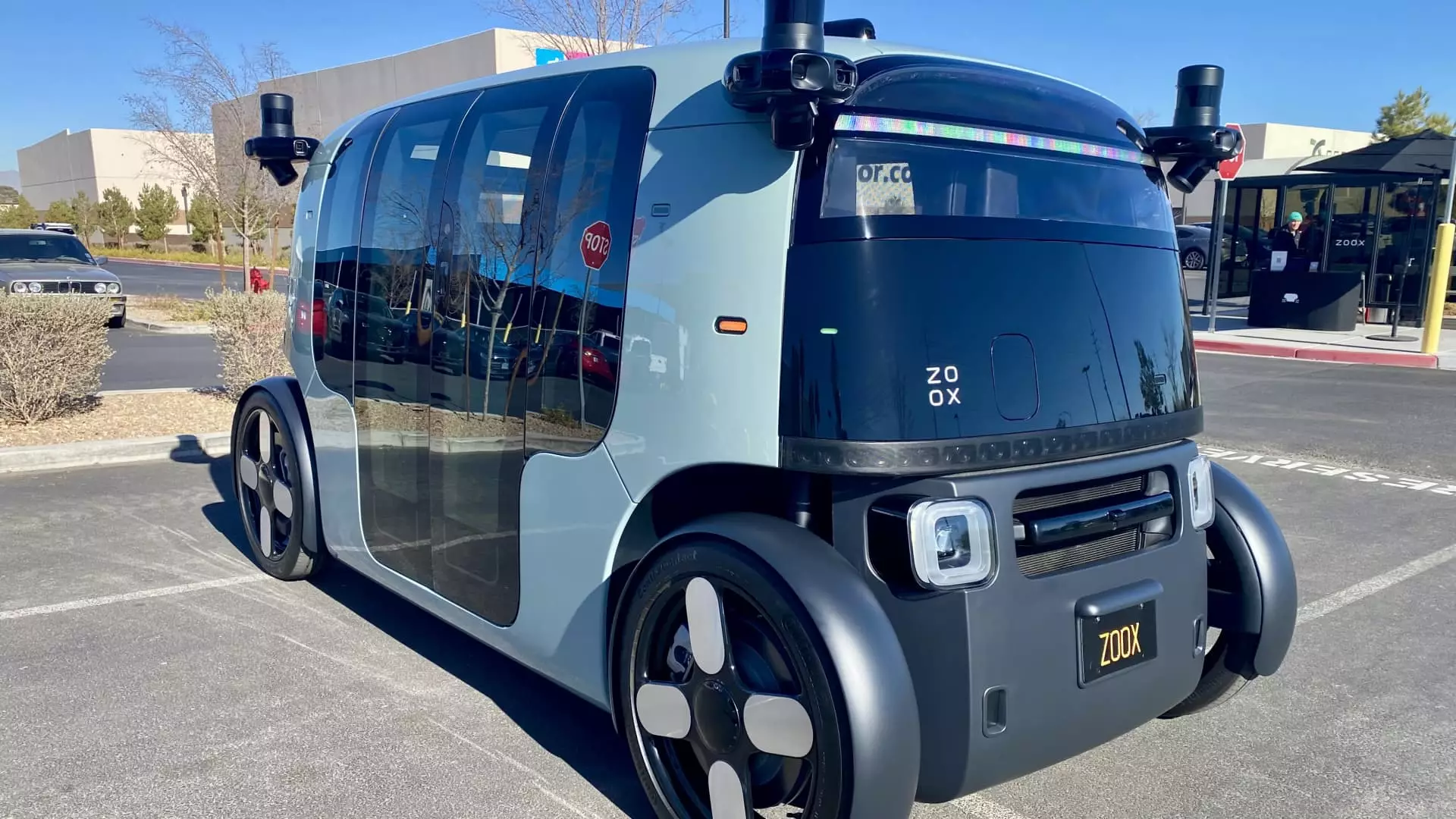As 2023 unfolds, Amazon’s autonomous vehicle initiative, Zoox, is on the brink of a pivotal transformation. With plans to not only ramp up its operations but also launch what it hopes will be a groundbreaking robotaxi service, Zoox stands at the crossroads of a technological revolution in urban mobility. Co-founder and Chief Technology Officer Jesse Levinson expressed optimism about Zoox’s trajectory, stating the company intends to bring its unique style of autonomous taxi services to the public in Las Vegas “quite soon.” However, the road ahead is littered with both technical and market hurdles that must be navigated skillfully.
Despite developing excitement around autonomous vehicles, Zoox faces a countercurrent of skepticism from investors. Many traditional automobile manufacturers that once led the charge in self-driving technology have retreated from their ambitious projects, due in part to the staggering costs and complex regulatory landscapes associated with autonomous operations. The contrast with Zoox is stark, especially given its unique approach—building robotaxis from the ground up without manual controls like steering wheels. This distinct methodology differentiates Zoox from market leaders like Waymo, which has opted for retrofitting conventional vehicles to achieve autonomous capabilities.
Zoox’s strategy seems audacious, but it is not without peril. The firm’s $1.3 billion acquisition by Amazon in 2020 highlights the tech giant’s commitment; however, the long-term viability of its business model remains to be seen. Levinson acknowledges this complexity, reflecting on an exhaustive workload that lies ahead. “It’s going to be useful in terms of customers being able to use it to go places,” he stated, but one must question whether Zoox will see a return on its investment this fiscal year.
Currently, Zoox is embroiled in extensive testing across three major cities—Las Vegas, San Francisco, and Foster City, California—eager to commercialize its innovative transport solutions. Las Vegas, with its dense traffic and vibrant tourism scene, is poised to be a testing crucible for the company’s Early Rider Program. Although the vehicle navigates reasonably well on public roads, it occasionally makes conservative decisions that could draw the ire of faster-paced human drivers. Levinson reiterated Zoox’s commitment to a measured, safety-first approach, which may significantly delay immediate commercialization.
Despite its anticipated presence in new cities such as Miami and Austin, Zoox has yet to pinpoint when these expansions will materialize. Levinson expressed a long-term vision for the service, hinting that by the end of the decade, urban dwellers across major U.S. cities could soon favor this autonomous ride-hailing option. However, such lofty goals underscore the technical and regulatory labyrinth that still looms large.
The constraints of the robotaxi market have become painfully evident over the years. Industry leaders like GM’s Cruise have faced catastrophic setbacks, including the fallout from accidents that led them to halt their commercial operations entirely due to regulatory scrutiny. While Zoox strives to carve its own niche, it is essential to scrutinize the implications of preceding industry failures. Other players such as Waymo, which has successfully broadened its reach with paid rides, serve as reminders that while technology develops, the path to sustainable business models remains fraught with challenges.
Autonomous vehicle expert Sam Abuelsamid articulately captured the nuances in play: “From a technological standpoint, I think Zoox is going in the right direction. What I’m somewhat less convinced about is the business model.” This skepticism is corroborated by the poor performance metrics across the board that relate to operational costs, regulatory burdens, and long-term return on investment. The obstacles appear daunting, particularly given the unrealistic optimism that previously clouded the industry’s prospects.
As Zoox endeavors to become a frontrunner in the robotaxi sector, its ambitious yet measured approach suggests a cautious optimism. The company is testing its limits in a broader landscape shadowed by both technological promise and investor apprehension. While the road ahead may prove bumpy, the relentless push towards autonomous mobility advocates a future rich with possibilities. Whether Zoox will emerge unscathed amid its competitors remains to be seen, but what is clear is that the unfolding narrative of autonomous vehicles will be a testament to both innovation and resilience in the face of adversity. Only time will tell if Zoox’s efforts will bear fruit or become just another hope dashed in the volatile world of tech startups.

